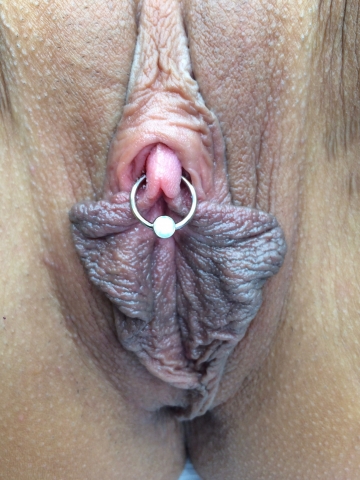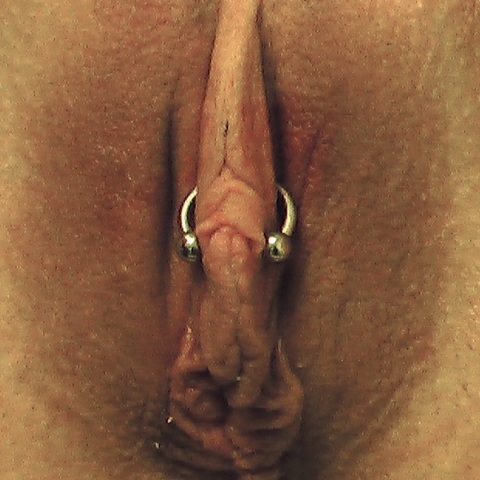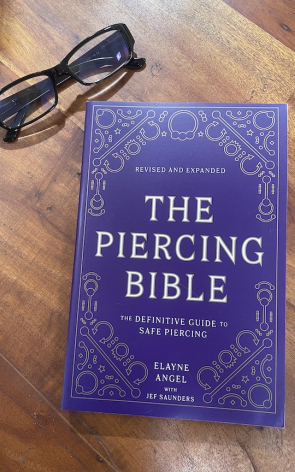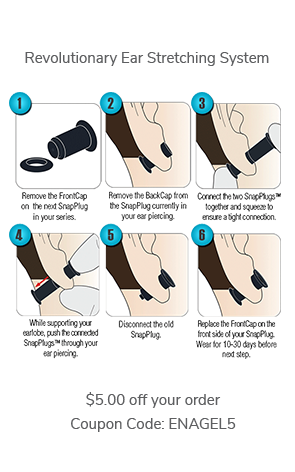I was asked the question, "How does it feel to get a clitoral piercing?" But even the most eloquent and specific description can never convey the true sensation of receiving any piercing. Not to mention the subjective nature of such experiences.
What I can say is that when you visit a qualified expert, the piercing will be very quick. And fleeting (momentary). The sensations of the piercing itself should begin to fade immediately. When I do any genital piercing--including clitoral glans piercings (more on this below), my clients do not complain of pain or discomfort by the time they're dressed and leaving the studio.
I can also say that if the way the piercing itself feels is your biggest consideration, then I don't think you're ready to take the leap. The sensation of the piercing experience should be a side issue. If you really want the piercing, this should not be a barrier to getting it.
Actual clitoral piercings—those of the clitoral glans—the clitoris itself, are rare and generally exquisitely sensitive/painful. I've only done a few over the years on women who had a "no big deal" kind of response. Most women who get this piercing find it to be an intense experience.
However, piercings of the clitoral hood: the foreskin-like tissue above the clitoris are the ones that are common and tend to be very easy to receive when done by a competent professional. For information on how common "vaginal piercings" are--see this post.
Few women are anatomically suited to clitoral glans piercings as this highly sensitive region tends to be too small to pierce, and/or surrounded by too much hood tissue for jewelry to rest comfortably. As an expert who specializes exclusively in nipple and genital piercings, I do just a few clitoral piercings per year, but scores of hood piercings.
But even hood piercings are not an option for all women, as they are still have certain anatomical requirements for safety and practicality. For a vertical clitoral hood (VCH) piercing, the hood must be deep enough, and the tissue of the pubic mound must not rest too closely or heavily over the area. For a horizontal clitoral hood (HCH) piercing, the hood must be relatively symmetrical with some height (convex shape; not concave), and no visible veins at the base of the hood. The tissue must be pliable enough to be lifted away from the clitoris for a safe piercing that passes through only the hood tissue (and not the clitoral glans or shaft).
A third option called a triangle piercing is also done through the hood tissue, and it is among the most popular that I perform. But even fewer women are anatomically suited to that one. It is placed horizontally at the base of the hood, right beneath the clitoral shaft, and it can be very sexually enhancing when placed properly on suitable anatomy.
Unfortunately, many piercers are not versed in the particulars of any of these and I see a LOT of botched genital piercings, including accidental clitoral glans piercings done when an unqualified practitioner attempts hood piercing!
This blog contains countless posts about improperly placed piercings done by unskilled piercers, sometimes even at reputable studios. Just because someone can do a great ear or nostril piercing, that does not automatically qualify them to do genital piercings. Make sure they have specific training! These hack jobs often cause unnecessary agony, and sometimes tissue damage to the clitoris. BE CAREFUL!
If you can't get pierced by me when I am on tour in Detroit, then check out my piercer referrals.
I offer professional online (photo) anatomy consultations if you want to know which female genital piercing(s) you’re suited to wear. Or if you are curious about whether your existing piercing is properly placed for your unique build.






